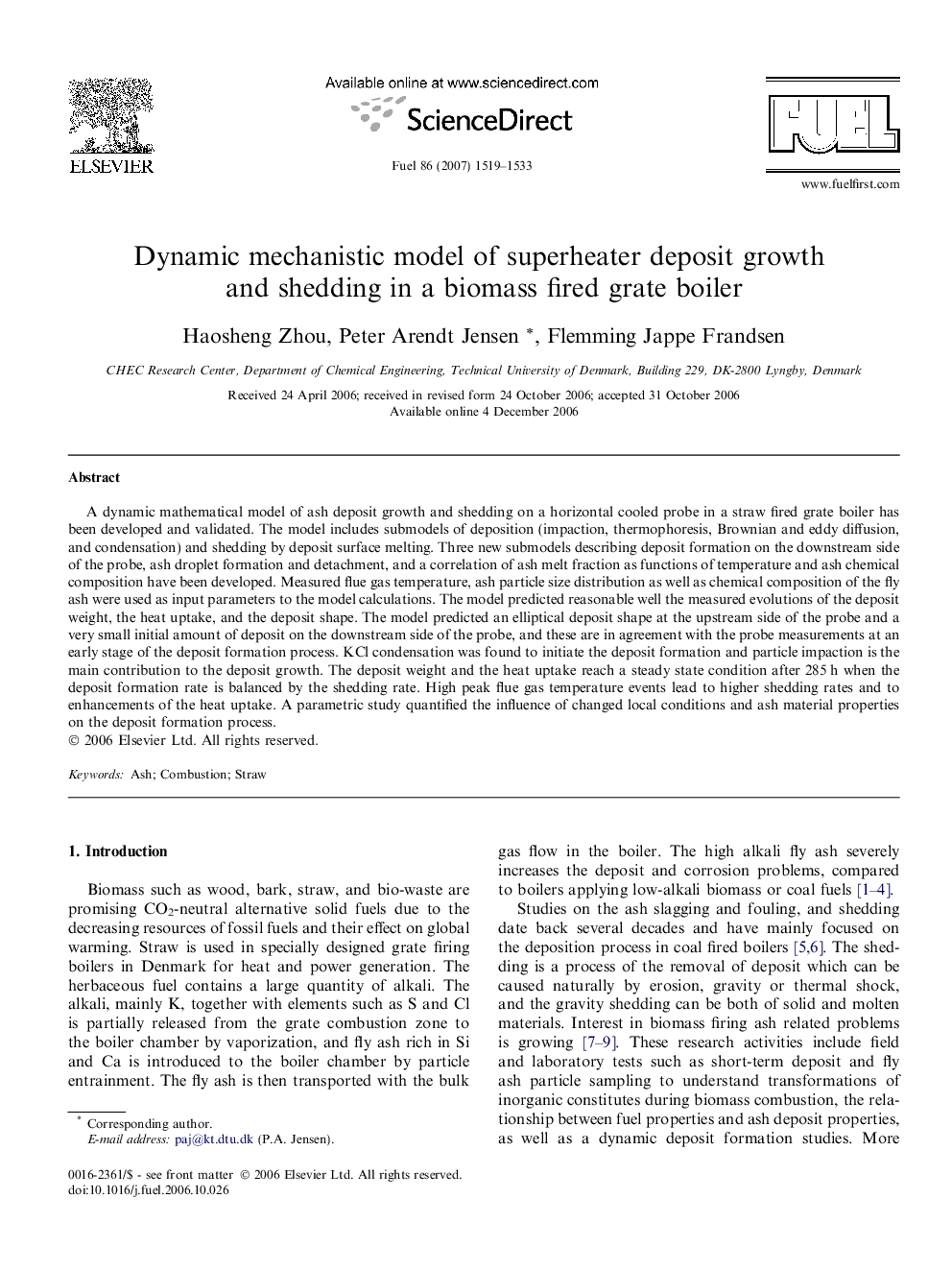| Article ID | Journal | Published Year | Pages | File Type |
|---|---|---|---|---|
| 207802 | Fuel | 2007 | 15 Pages |
A dynamic mathematical model of ash deposit growth and shedding on a horizontal cooled probe in a straw fired grate boiler has been developed and validated. The model includes submodels of deposition (impaction, thermophoresis, Brownian and eddy diffusion, and condensation) and shedding by deposit surface melting. Three new submodels describing deposit formation on the downstream side of the probe, ash droplet formation and detachment, and a correlation of ash melt fraction as functions of temperature and ash chemical composition have been developed. Measured flue gas temperature, ash particle size distribution as well as chemical composition of the fly ash were used as input parameters to the model calculations. The model predicted reasonable well the measured evolutions of the deposit weight, the heat uptake, and the deposit shape. The model predicted an elliptical deposit shape at the upstream side of the probe and a very small initial amount of deposit on the downstream side of the probe, and these are in agreement with the probe measurements at an early stage of the deposit formation process. KCl condensation was found to initiate the deposit formation and particle impaction is the main contribution to the deposit growth. The deposit weight and the heat uptake reach a steady state condition after 285 h when the deposit formation rate is balanced by the shedding rate. High peak flue gas temperature events lead to higher shedding rates and to enhancements of the heat uptake. A parametric study quantified the influence of changed local conditions and ash material properties on the deposit formation process.
